Addendum: Corpse plant Wally unfurled its spathe to open fully on the evening of Tuesday, June 27, 2023, producing its well known stench. The odor began to fade the next day, and the bloom closed on Thursday, June 29.
"It's a bloom," reported John Leichter, gardener and acting supervisor of the Biology Building greenhouse on Indiana University's Bloomington campus. Leichter was referring to the shoot that had emerged from the corm of the greenhouse's corpse plant (Amorphophallus titanum), fondly known as Wally.
Greenhouse staffers call the corpse plant Wally in honor of Hugh Wallace "Wally" Scales, the first manager of the then Jordan Hall (now Biology Building) greenhouse. Notice of the impending bloom posted on the greenhouse Facebook page spread quickly, launching "Wally Watch" in anticipation of the plant's bloom opening.
This will be Wally's third bloom or inflorescence. A. titanum has one of [corrected June 29, 2023; see note below*] the the largest unbranched inflorescences (cluster of flowers arranged on a single stalk or a branched stalk) in the world, reaching over 10 feet tall. Its inflorescence consists of a spike (spadix) with tiny male and female flowers encircling the spadix base enclosed within a sheath (spathe). While in bloom, A. titanum produces the odor of rotting flesh—luring flies and carrion-eating beetles for pollination and earning it the corpse plant moniker. The stunning scarlet interior and furrowed texture of its spathe are thought to aid in the carcass illusion. During the peak of blooming, the tip of the hollow spadix heats up to a maximum temperature of 100 degrees F. to help volatilize the plant's stinky perfume.
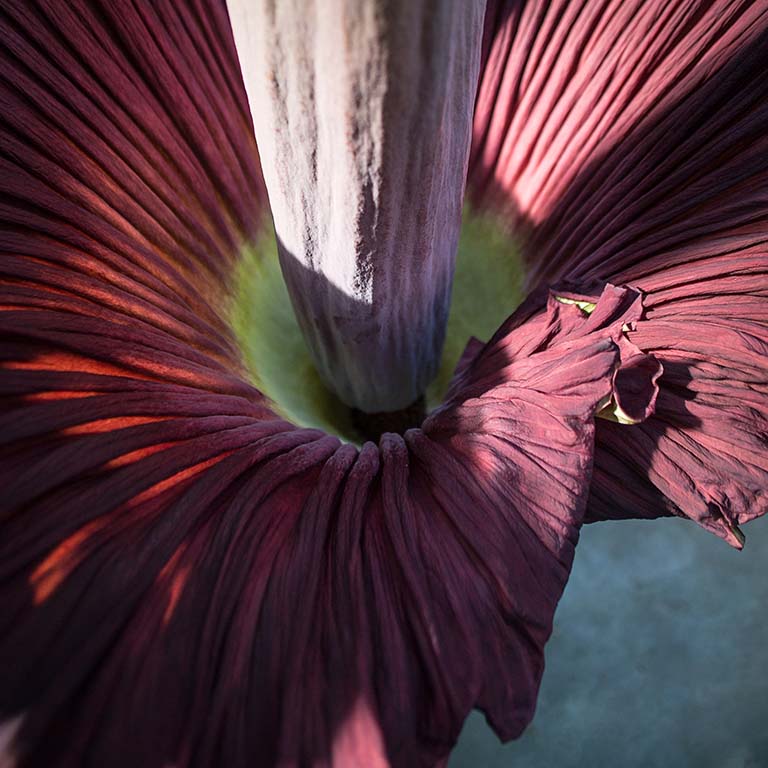
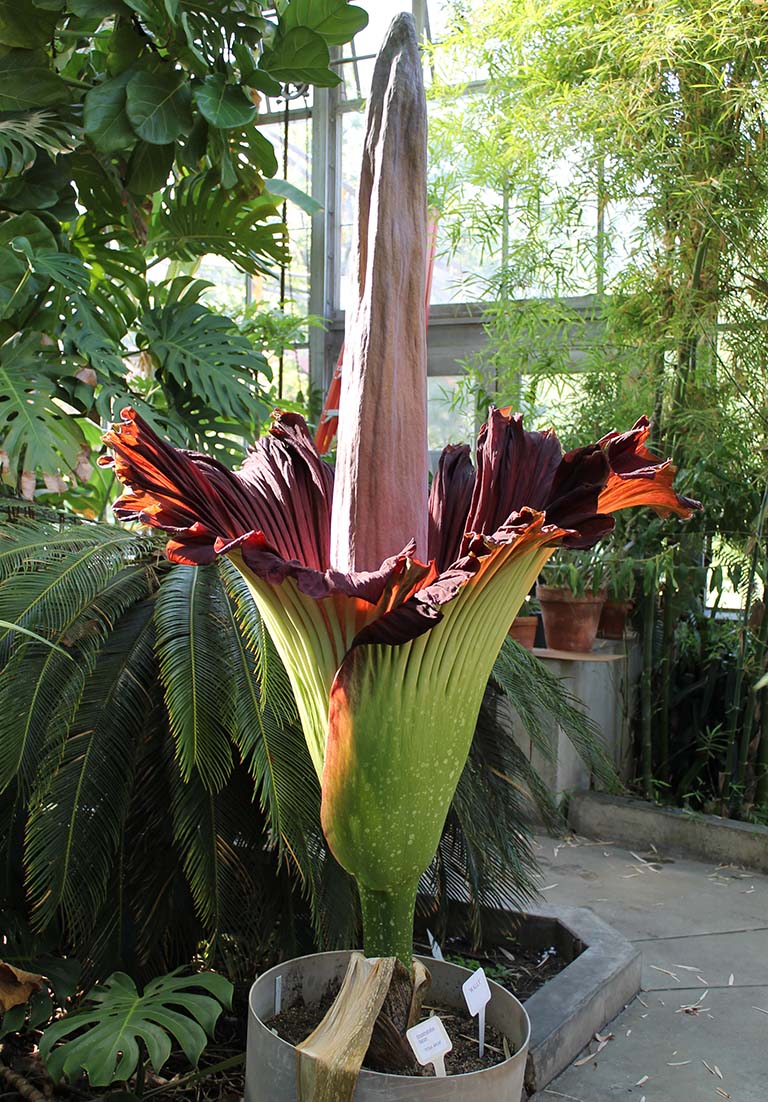
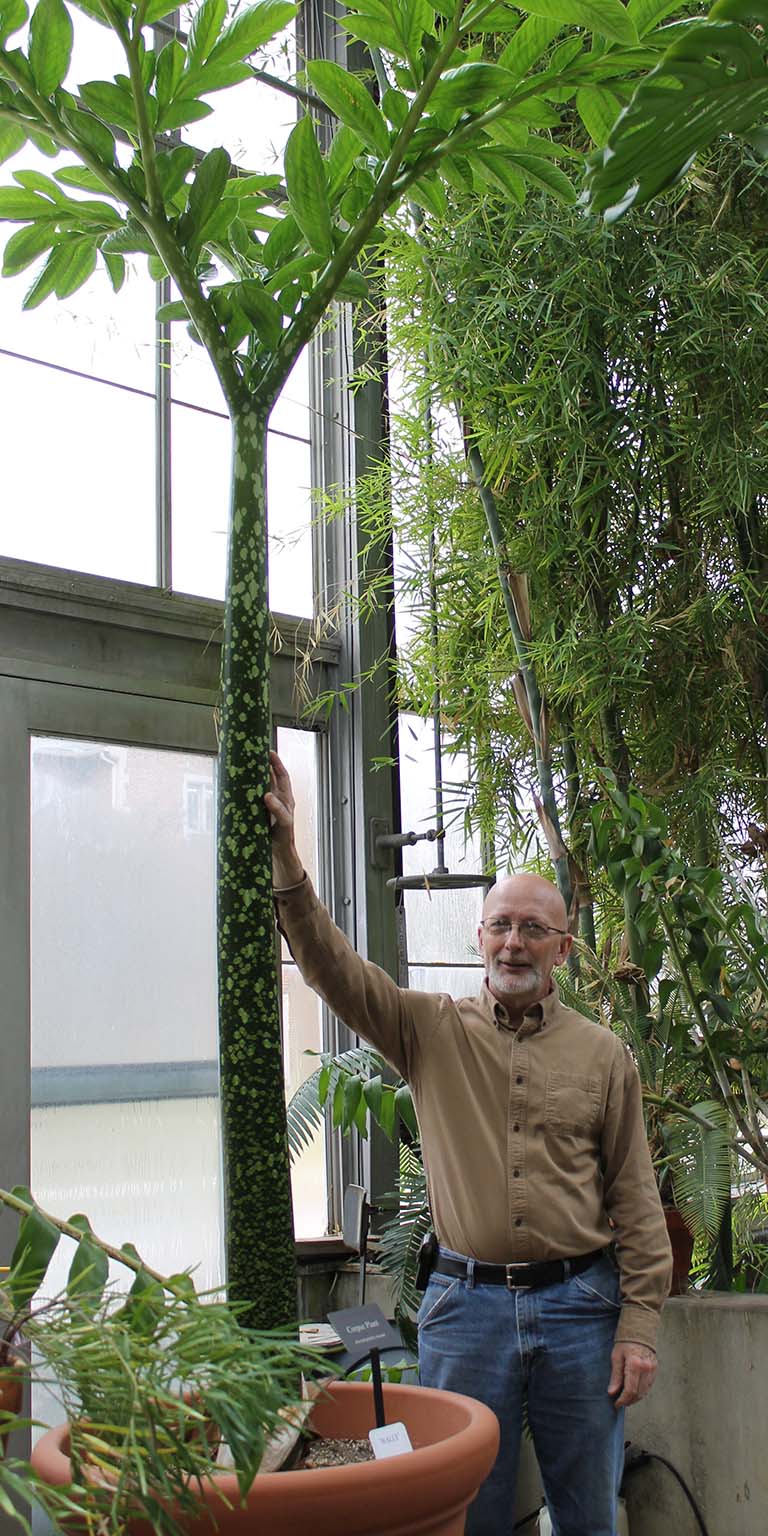
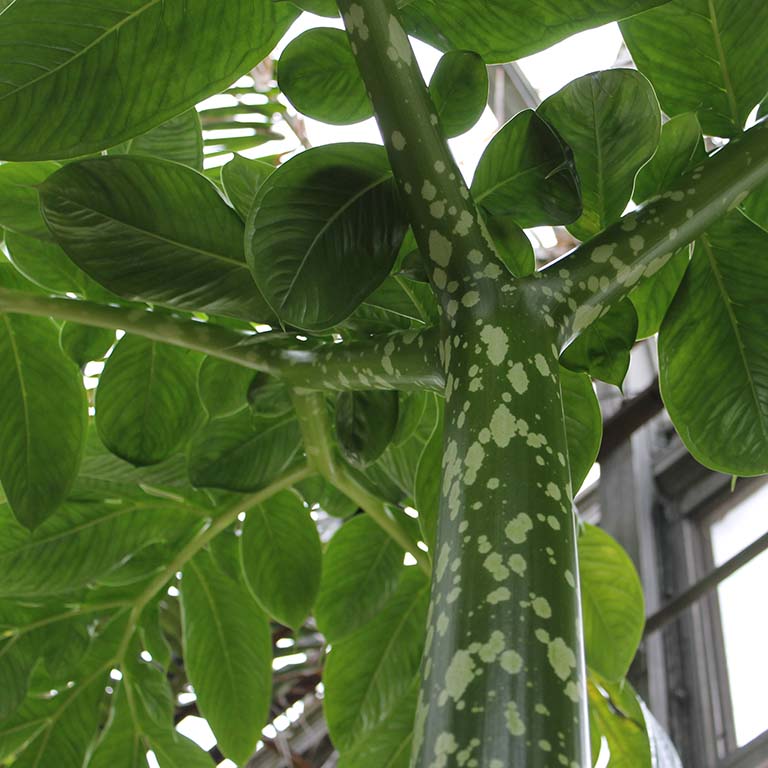
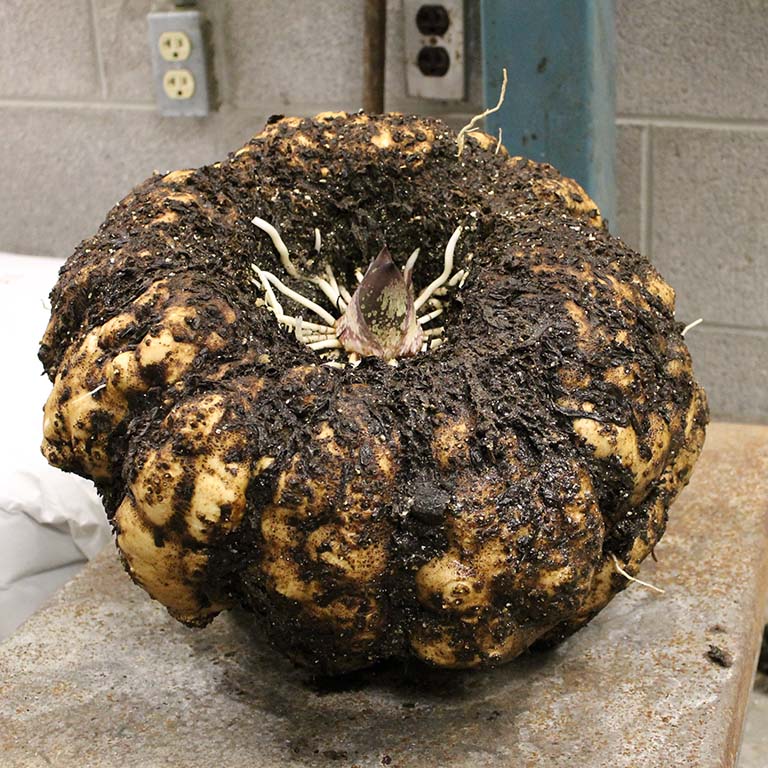
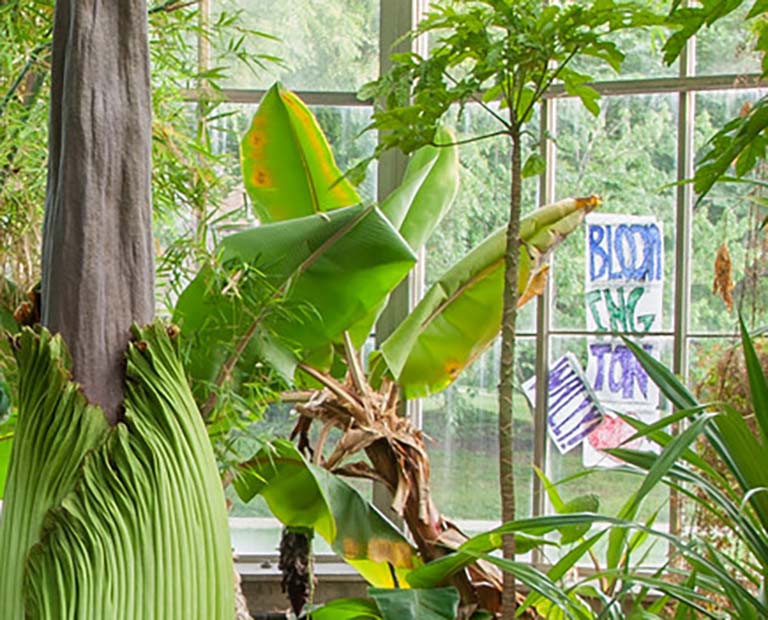
 The College of Arts
The College of Arts